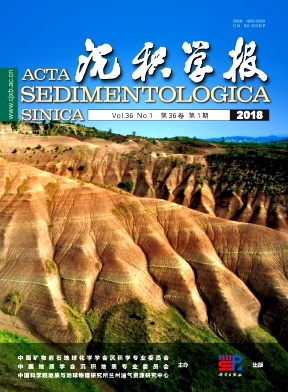Provenance Analysis for the Clastic Rocks in Tangjiawu Formation, South Anhui: Constraints from Detrital Zircon Ages and Geochemistry Characteristics
doi: 10.3969/j.issn.1000-0550.2018.007
- Received Date: 2016-12-05
- Rev Recd Date: 2017-02-24
- Publish Date: 2018-02-10
-
Key words:
- Tangjiawu Formation /
- provenance /
- detrital zircon /
- geochemistry /
- early Palaeozoic orogenic belt /
- South Anhui
Abstract: Provenance and sedimentary age are still debated about Tangjiawu Formation from the South Anhui.The study focused on the petrography, geochemical features and detrital zircon ages of the sandstones in the Tangjiawu Formation. The sandstones, which are highly rounded and sorted, are essentially composed of metamorphic detritus and quartz with wave extinction. They exhibited relatively high compositional maturity. Their provenances were dominated by felsic materials that had undergone intensive chemical weathering or sedimentary recycling. LA-ICP-MS zircon U-Pb dating yields a youngest age of 424 Ma, which represents the lower limit of deposition age. In addition to the zircon ages, the Tangjiawu Formation uncomfortably overlain by the Devonian Guanshan Formation, suggesting that it should be deposited in Late Silurian that approached to the termination timing of the early Palaeozoic orogenic event. Seventy-nine detrital zircons with discordance <10% display a broadly age spectrum of 2 912 Ma to 424 Ma. Most of the detrital zircons have U-Pb age grouped between 731 and 1 031 Ma, with two clusters peaking at 981 and 756 Ma. A few populations with peak ages of 2 476 Ma, 517 Ma and 453 Ma are present as well. This suggested that the provenances of the Tangjiawu Formation were mainly derived from the early-to middle-Neoproterozoic igneous rocks, Late Neoproterozoic rift sequence and Sinian to Ordovician sediments with subordinate synorogenic magmatic or sedimentary rocks. The early Palaeozoic intra-continental orogeny caused the uplifting of the sediments in the pre-middle-Ordovician basins, which mostly contributed to sources of the deposits in the intra-continental foreland basin. The deposition and evolution of the foreland basin in the South China were controlled by the early Palaeozoic orogeny, reflecting the coupled material recycling between the orogen and the foreland basin.
| Citation: | YANG Mei, HONG TianQiu, XU JinLong, LI XiuCai, LUO Lei. Provenance Analysis for the Clastic Rocks in Tangjiawu Formation, South Anhui: Constraints from Detrital Zircon Ages and Geochemistry Characteristics[J]. Acta Sedimentologica Sinica, 2018, 36(1): 42-56. doi: 10.3969/j.issn.1000-0550.2018.007 |






 DownLoad:
DownLoad: